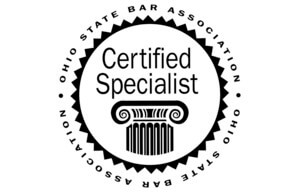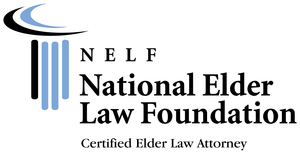Estate Taxes
/Who has to pay estate taxes?
Depending on how much you own when you die, your estate may have to pay estate taxes before your assets can be fully distributed. Estate taxes are different from, and in addition to, probate expenses (which can be avoided with a revocable living trust) and final income taxes (on income you receive in the year you die). Some states also have their own death/inheritance taxes.
Federal estate taxes are expensive; in 2015 the top rate is 40%. And they must be paid in cash, usually within nine months after you die. Since few estates have this kind of cash, assets often have to be liquidated. However, estate taxes can be substantially reduced or even eliminated through the use of proper planning.
Your estate will have to pay estate taxes if its net value when you die is more than the "exempt" amount set by Congress at that time. Here is the current schedule:
Year of Death - "Exemption" Amount
2009 - $3,500,000
2010 - $5,000,000 (special rules)
2011 - $5,000,000
2012 - $5,120,000
2013 - $5,250,000
2014 - $5,340,000
2015 - $5.43M
2016 - $5.45M
2017 - $5.49M
Married individuals can use their spouse's exemption, so a married individual could
potentially have an exemption of $10,980,000.
How is the net value of my estate determined?
To determine the current net value, add your assets, then subtract your debts. Include your home, business interests, bank accounts, investments, personal property, IRAs, retirement plans and death benefits from your life insurance.
How can I reduce or eliminate my estate taxes?
In the simplest terms, there are three ways:
- If you are married, use both estate tax exemptions.
- Remove assets from your estate before you die.
- Buy life insurance to replace assets given to charity and/or pay any remaining estate taxes.
Using Both Exemptions: Taking Advantage of Portability
If your spouse is a U.S. citizen, you can leave him or her an unlimited amount when you die with no estate tax. This is no longer a potential problem, through the advent of portability.
Portability allows the surviving spouse to continue using the deceased spouse's exemption amount, though it is no longer indexed to inflation. The amount of the exemption will remain the same as it was when the spouse died. This exemption is able to be used in combination with the surviving spouse's own exemption. In 2014, the combined exemption amount for a married couple is $10.68 million.
However, portability can be extinguished through a specific set of circumstances. If the surviving spouse remarries, portability is not extinguished until the death of the new spouse. At the death of the new spouse, the surviving spouse will take the new spouse's exemption, and the first spouse's exemption will be lost.
This planning can also be done in a Will, but you would not avoid probate or enjoy the other benefits of a living trust.
Thanks to the generous $5.34 million exemption for individuals who pass away in 2014, the assets of relatively few people in the United States will be exposed to the federal estate tax currently, but again, the future estate tax landscape is unclear.
Take Advantage of the Unlimited Marital Deduction
If your spouse is a U.S. citizen, you can leave any amount to him or her with no federal estate tax hit. If you are a U.S. citizen, your spouse can do the same. This is the so-called unlimited marital deduction privilege. For married couples, the $5.34 million federal estate tax exemption and the unlimited marital deduction privilege provide significant federal estate tax shelter for those who die in 2014.
If either you or your spouse has a large estate, however, leaving everything to your spouse can result in your spouse having an estate that exceeds the federal estate tax exemption when he or she dies. In that case, you need to look at the other estate-tax-savings tips.
Take Advantage of Portable Estate Tax Exemption
For 2014, you can direct the executor of your estate to leave any unused federal estate tax exemption to your surviving spouse. For example, if you die in 2014, you can leave everything to your spouse, including your unused $5.34 million exemption. Your spouse would then have a $10.68 million exemption if he or she dies in 2014 (his or her $5.34 million exemption plus your unused $5.34 million exemption).
Removing Assets From Your Estate
A great way to reduce estate taxes is to reduce the size of your estate before you die. So, spend some and enjoy it!
Also, you probably know to whom you want to leave your assets after you die. If you can afford it, why not give them some assets now and save estate taxes? It can be very satisfying to see the results of your gifts--something you can't do if you keep everything until you die. Appreciating assets are usually best to give in this scenario, because not only the asset itself but the increase in value due to future appreciation will be out of your estate.
Assets you give away keep your cost basis (what you paid), so the recipients may have to pay capital gains tax when they sell. But the top long-term capital gains rate is only 20%* (if assets are held at least 12 months). That's substantially less than estate taxes (40% in 2014) that are imposed if you keep the assets until you die.
Some of the most commonly-used strategies to remove assets from estates are explained below. Note that these are all irrevocable, so you can't change your mind later.
Tax-Free Gifts
This is easy and it doesn't cost anything. Each year, you can give up to $14,000 ($28,000 if married) to as many people as you wish. So if you give $14,000 to each of your two children and five grandchildren, you will reduce your estate by $98,000 (7 x $14,000) a year - $182,000 if your spouse joins you. (This amount is tied to inflation and may increase every few years.)
You can give more, but it will use up some of your estate tax exemption. That's because it's a combined gift and estate tax exemption. While you're living, it's a gift tax exemption; after you die, it's an estate tax exemption.
Charitable gifts are unlimited, as are gifts for tuition and medical expenses if paid directly to the institution.
Irrevocable Life Insurance Trust (ILIT)
An easy way to remove life insurance from your estate is to make an ILIT the owner of the policies. As long as you live three years after the transfer of an existing policy, the death benefits will not be included in your estate.
Usually the ILIT is also beneficiary of the policy, giving you the option of keeping the proceeds in the trust for years, with periodic distributions to your spouse, children and grandchildren. Proceeds kept in the trust are protected from irresponsible spending and creditors, even ex-spouses.
Qualified Personal Residence Trust (QPRT)
A QPRT lets you save estate taxes by removing your home (a substantial asset) from your estate now; yet you can continue to live there. Here's how it works.
You transfer your home to a trust for a period of time, usually 10 to 15 years. During this time, you continue to live in your home. When the time is up, it transfers to the trust beneficiaries, usually your children. If you wish to stay there longer, you may make arrangements to pay rent. If you die before the trust ends, your home will be included in your estate, just as it would without a QPRT.
There's more. A QPRT "leverages" your estate tax exemption. Since your children will not receive the house until the trust ends, its value as a gift is reduced. For example, if the current value of your home is $250,000 and you put it in a QPRT for 15 years, its value for tax purposes could be as little as $75,000. That leaves much more of your exemption for other assets.
Grantor Retained Annuity Trust (GRAT) and Grantor Retained Unitrust (GRUT)
These are much like a QPRT. The main difference is that a GRAT or GRUT lets you transfer an income-producing asset (stock, real estate, business) to a trust for a set number of years, removing it from your estate, and still receive the income. (If the income is a set amount, the trust is called a GRAT. If the income fluctuates, it's called a GRUT.)
When the trust ends, the asset will go to the beneficiaries (usually your children). Since they will not receive it until then, the value of the gift is reduced. If you die before the trust ends, the asset will be in your estate.
Family Limited Partnership (FLP) and Limited Liability Company (LLC)
Both FLPs and LLCs let you reduce estate taxes by transferring assets like a family business, farm, real estate or stocks to your children now, yet you keep full control.
For example, you and your spouse can set up an FLP or LLC and transfer assets to it. In exchange, you receive ownership interests. Though you have a fiduciary obligation to other owners, you control the FLP or LLC either through the general partner or as manager, and you can give ownership interests to your children, which removes value from your taxable estate.
The ownership interests cannot be sold or transferred without your approval. And because there is no market for these interests, their value is discounted. So you can transfer the underlying assets to your children at a reduced value - without losing control.
Charitable Remainder Trust (CRT)
A CRT lets you convert a highly appreciated asset (like stocks or investment real estate) into a lifetime income without paying capital gains tax when the asset is sold. It also reduces your income and estate taxes, and lets you benefit a charity that has special meaning to you.
With a CRT, you transfer the asset to an irrevocable trust. This removes it from your estate. You also get an immediate charitable income tax deduction.
The trust then sells the asset at market value, paying no capital gains tax, and reinvests in income-producing assets. For the rest of your life, the trust pays you an income. Since the principal has not been reduced by capital gains tax, you can receive more income over your lifetime than if you had sold the asset yourself. After you die, the trust assets go to the charity you have chosen.
Charitable Lead Trust (CLT)
A CLT is somewhat the opposite of a CRT. You transfer an asset to the trust, which reduces the size of your estate and saves estate taxes. But instead of paying the income to you, the trust pays it to a charity for a set number of years or until you die. After your death, the trust assets will go to your spouse, children or other beneficiaries.
Buying Life Insurance
Depending on your age and health, buying life insurance can be an inexpensive way to replace an asset given to charity and/or to pay any remaining estate taxes. The three-year rule mentioned earlier does not apply to new policies. But you should not be the owner of the policy - that would increase your taxable estate and estate taxes. To keep the death benefits out of your estate, set up an ILIT and have the trustee purchase the policy for you.
How To Reduce or Eliminate Estate Taxes Summary Chart
1. If Married, Consider Creating a Living Trust
(Living Trust with Tax Planning)
• Uses both spouses' estate tax exemptions
• Protects up to $10.68 million from estate taxes
• Can protect larger estates if the federal estate tax exemption is raised in the future
2. Remove Assets From Estate
(Make Annual Tax-Free Gifts)
• Simple, no-cost way to save estate taxes by reducing size of estate
• $14,000 ($28,000 if married) each year per recipient (tied to inflation)
• Unlimited gifts to charity and for medical/educational expenses paid to provider
(Transfer Life Insurance Policies to Irrevocable Life Insurance Trust)
• Removes death benefits of existing life insurance policies from estate
• Included in estate if you die within 3 years of transfer
(Qualified Personal Residence Trust)
• Removes home from estate at discounted value
• You can keep living there
(Grantor Retained Annuity Trust / Grantor Retained Unitrust)
• Removes income-producing assets from estate at discounted value
• You can continue to receive income
(Family Limited Partnership)
• Discounts value of business, farm, real estate or stock
• Lets you start transferring assets to children now to reduce your taxable estate
• You keep full control
(Charitable Remainder Trust)
• Converts appreciated asset into lifetime income with no capital gains tax
• Saves estate taxes (asset out of estate) and income taxes (charitable deduction)
• Charity receives trust assets after you die
(Charitable Lead Trust)
• Removes asset from your estate, saving estate taxes
• Income goes to charity for set time period, then trust assets go to loved ones
3. Buy Life Insurance
(Through Irrevocable Life Insurance Trust)
• Can be inexpensive way to pay estate taxes
• Death benefits not included in your estate
* Capital gains taxes may be higher for depreciation recapture, collectibles, and qualified small business stock after exclusion.





